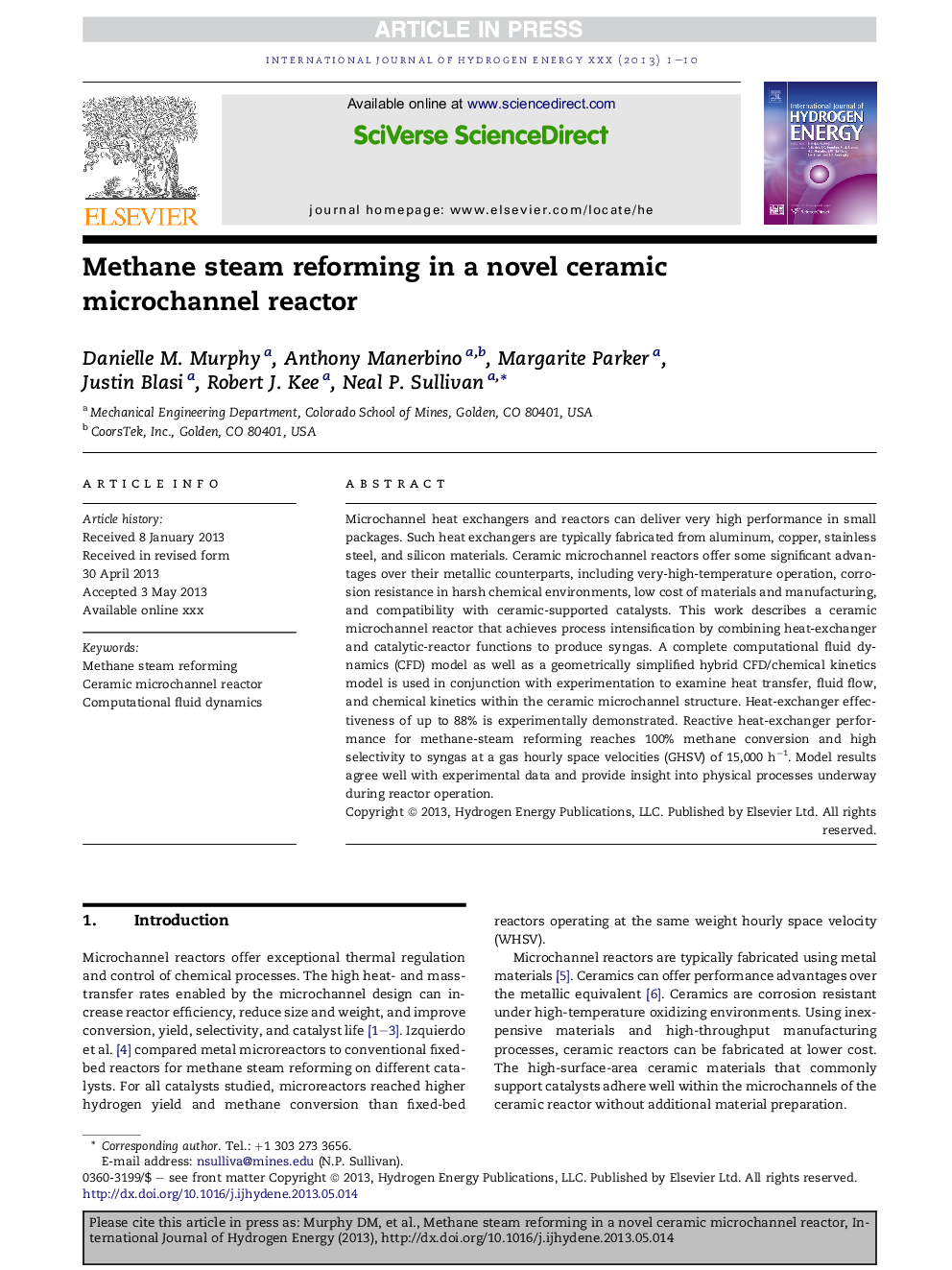| Article ID | Journal | Published Year | Pages | File Type |
|---|---|---|---|---|
| 7722523 | International Journal of Hydrogen Energy | 2013 | 10 Pages |
Abstract
Microchannel heat exchangers and reactors can deliver very high performance in small packages. Such heat exchangers are typically fabricated from aluminum, copper, stainless steel, and silicon materials. Ceramic microchannel reactors offer some significant advantages over their metallic counterparts, including very-high-temperature operation, corrosion resistance in harsh chemical environments, low cost of materials and manufacturing, and compatibility with ceramic-supported catalysts. This work describes a ceramic microchannel reactor that achieves process intensification by combining heat-exchanger and catalytic-reactor functions to produce syngas. A complete computational fluid dynamics (CFD) model as well as a geometrically simplified hybrid CFD/chemical kinetics model is used in conjunction with experimentation to examine heat transfer, fluid flow, and chemical kinetics within the ceramic microchannel structure. Heat-exchanger effectiveness of up to 88% is experimentally demonstrated. Reactive heat-exchanger performance for methane-steam reforming reaches 100% methane conversion and high selectivity to syngas at a gas hourly space velocities (GHSV) of 15,000Â hâ1. Model results agree well with experimental data and provide insight into physical processes underway during reactor operation.
Related Topics
Physical Sciences and Engineering
Chemistry
Electrochemistry
Authors
Danielle M. Murphy, Anthony Manerbino, Margarite Parker, Justin Blasi, Robert J. Kee, Neal P. Sullivan,
